Reply To:
Name - Reply Comment
 We are fortunate to possess the chronicles such as Dipavamsa and Mahavamsa to voice about our history with proof corroborated by the early Brahmi inscriptions. The propagation of Buddhism in Sri Lanka took place during the reign of King Devanampiya Tissa (250-210 BCE) by Thera Mahinda. The presence of Theras, Itthika and Mahinda in this island is mentioned in one of the early Brahmi inscriptions of the third century BCE, preserved on the rock surface at Rajagalatenna in the Ampara District.
We are fortunate to possess the chronicles such as Dipavamsa and Mahavamsa to voice about our history with proof corroborated by the early Brahmi inscriptions. The propagation of Buddhism in Sri Lanka took place during the reign of King Devanampiya Tissa (250-210 BCE) by Thera Mahinda. The presence of Theras, Itthika and Mahinda in this island is mentioned in one of the early Brahmi inscriptions of the third century BCE, preserved on the rock surface at Rajagalatenna in the Ampara District.
The text of the inscription is as follows:
Ye ima dipa pațamaya idiya agatana Iḑika tera Mahida teraha tube
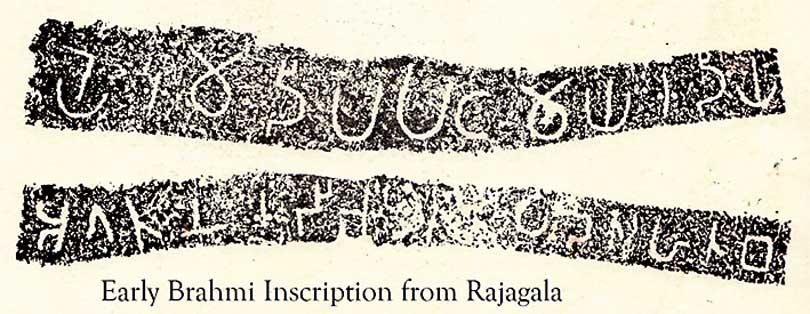
This is the stupa of Thera Itthika and Thera Mahinda who came to this island by its foremost good fortune. (S. Paranavitana, Inscriptions of Ceylon Vol. I, No. 468)
At the request of the King, Mahinda Thera delivered the first sermon in the Nandana Park outside the city.
Women were the most enthusiastic among the crowd who gathered at the venue to listen to the sermon. When Princess Anula expressed her desire to get ordained as a bhikkhuni, the Thera summoned his younger sister Theri Sanghamitta to inaugurate the Bhikkhuni Sasana in Sri Lanka.
Theri Sanghamitta arrived on the Unduvap Poya (November-December) Full Moon Day in the island with the southern branch of the sacred Bodhi Tree in Buddha Gaya in Jambudipa (India), after a hazardous sea voyage to be received by the monarch with pomp and pageantry.
A large number of artisans well versed in the innovative arts and crafts accompanied the Theri to the island to usher a new era of prosperity.
Theri Sanghamitta took up her abode in a monastery named Upasika Vihara within the city of Anuradhapura and established the Bhikkhuni Order by ordaining princess Anula and her retinue of five hundred women as bhikkhunis.
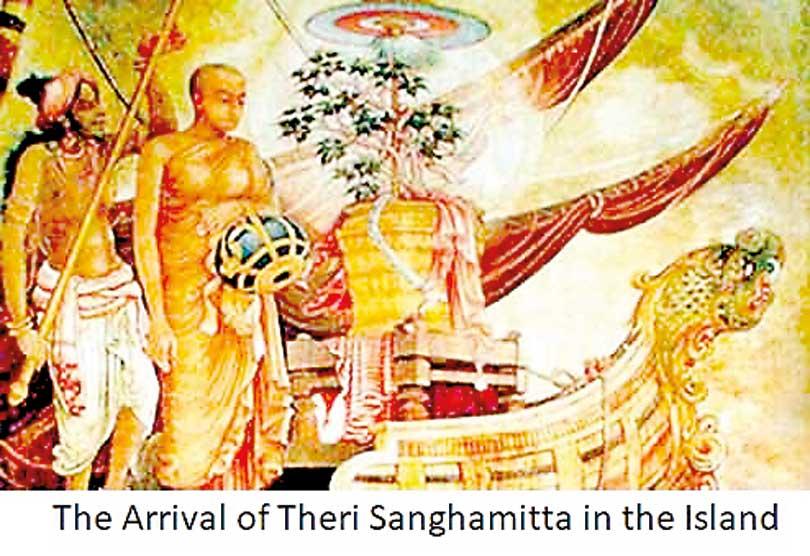
Within the buildings of the monastery, the mast of the ship, in which the Bodhi branch was brought, the rudder and the helm were kept. Another monastery named Hatthalhaka Vihara was built for Theri Sanghamitta as she wished to lead a solitary life.
After the establishment of the Bhikkhuni Sasana, the four congregations of the Buddhist Order comprising the Bhikkhus, Bhikkhunis, Upasakas and Upasikas were firmly established in the Island with the wholehearted consent given by King Devanampiya Tissa. From then onwards Buddhism became the State religion of Sri Lanka.
A large number of women, after renouncing the worldly life, ordained as Bhikkhunis and having received Upasampada (The higher ordination) were capable of gaining spiritual attainment of Arhantship. According to the records kept by the Chinese Bhikkhu Fa Hsien, the Bhikkhuni Sasana being well established in the fifth century CE, a Bhikkhuni named Nandi had gone with a group of Sri Lankan Bhikkhunis to the Sung capital in China.
Immediately after another group of bhikkhunis headed by Bhikkhuni Devasara are said to have sailed to China and conferred the higher ordination to the Bhikkhunis in China.
According to the Mahavamsa, after establishing Buddhism as the State religion in this island, King Devanampiya Tissa had undertaken the task of building Aramas (residences) for the Sangha Community in the city.
The buildings raised by the monarch as residences for Mahinda Thera and the brotherhood were referred to as Prasadas (Mansions) in the chronicles, which appears by the term pasadas in the inscriptions.
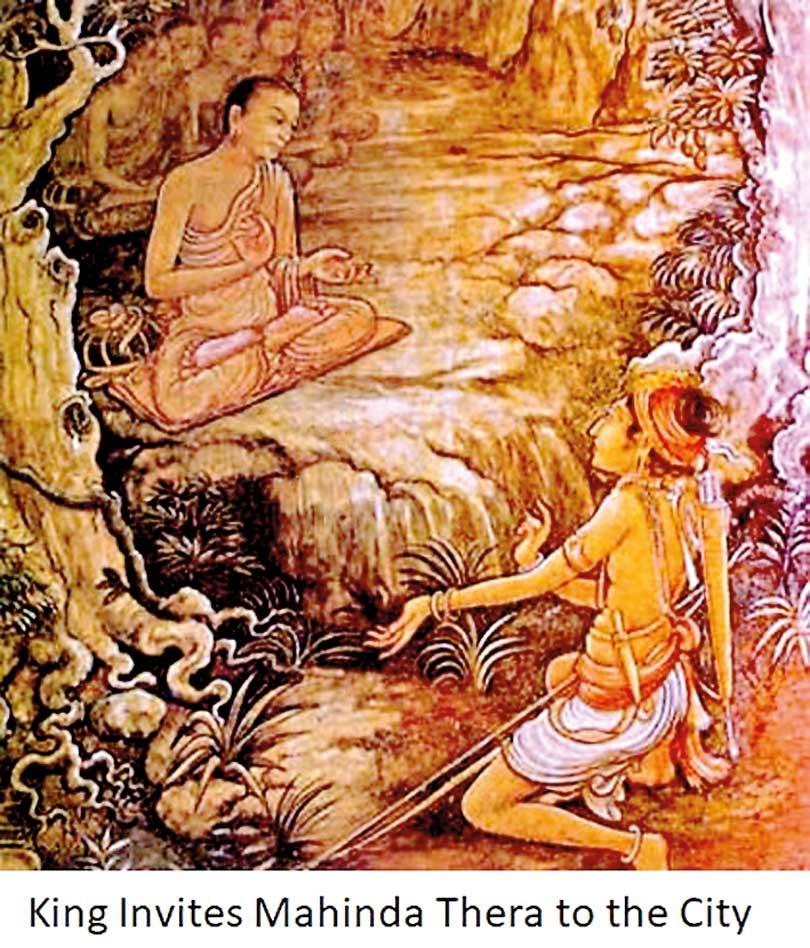
At Mihintale he put up temporary abodes in sixty-eight caves for the Vassa season as instructed by Mahinda Thera. To stay in the caves for the Vassa season was a practice recommended by the Buddha. Beginning from the time of King Devanampiya Tissa, for four centuries the kings and the people were in the practice of donating caves as vassavasas or rainy retreats to the Sangha community. The names of the donors were inscribed under the drip-ledges of caves and by the phrase, “Agata anagata catudiśa śagaśa dine” the donation was made to the entire Sangha community coming from the four directions.
The Bhikkunis are referred to as Shamaņi (Pali Samaņi and Skt. Shramani) in the early Brahmi cave inscriptions. They appear as donors of caves and the following inscription implies a Shamaņi as a donor.
We are fortunate to possess the chronicles such as Dipavamsa and Mahavamsa to voice about our history with proof corroborated by the early Brahmi inscriptions.
Gamika Mitapalaśa jhita Revati Śamaņiya leņe
The cave of Śamaņi Revati, daughter of the Village Councillor Mittapāla.
This inscription gives the impression that the cave was inherited by Samaņi Revatī from her father Mittapāla, the Village Councillor.
From the inception of the Bhikkhuni Sasana in ancient Sri Lanka, the kings were enthusiastic in erecting aramas or monastic residences for the Bhikkhuni community. There have been instances, where the inscriptions mention about building residences for the Bhikkhunis. The buildings raised as residences for them are known as mehenivara, Skt. Shramani gruha and P. Samani ghara. In the slab inscription of Kassapa V ( 914-923 CE ) the following statement is made about erecting Bhikkhuni Aramas.
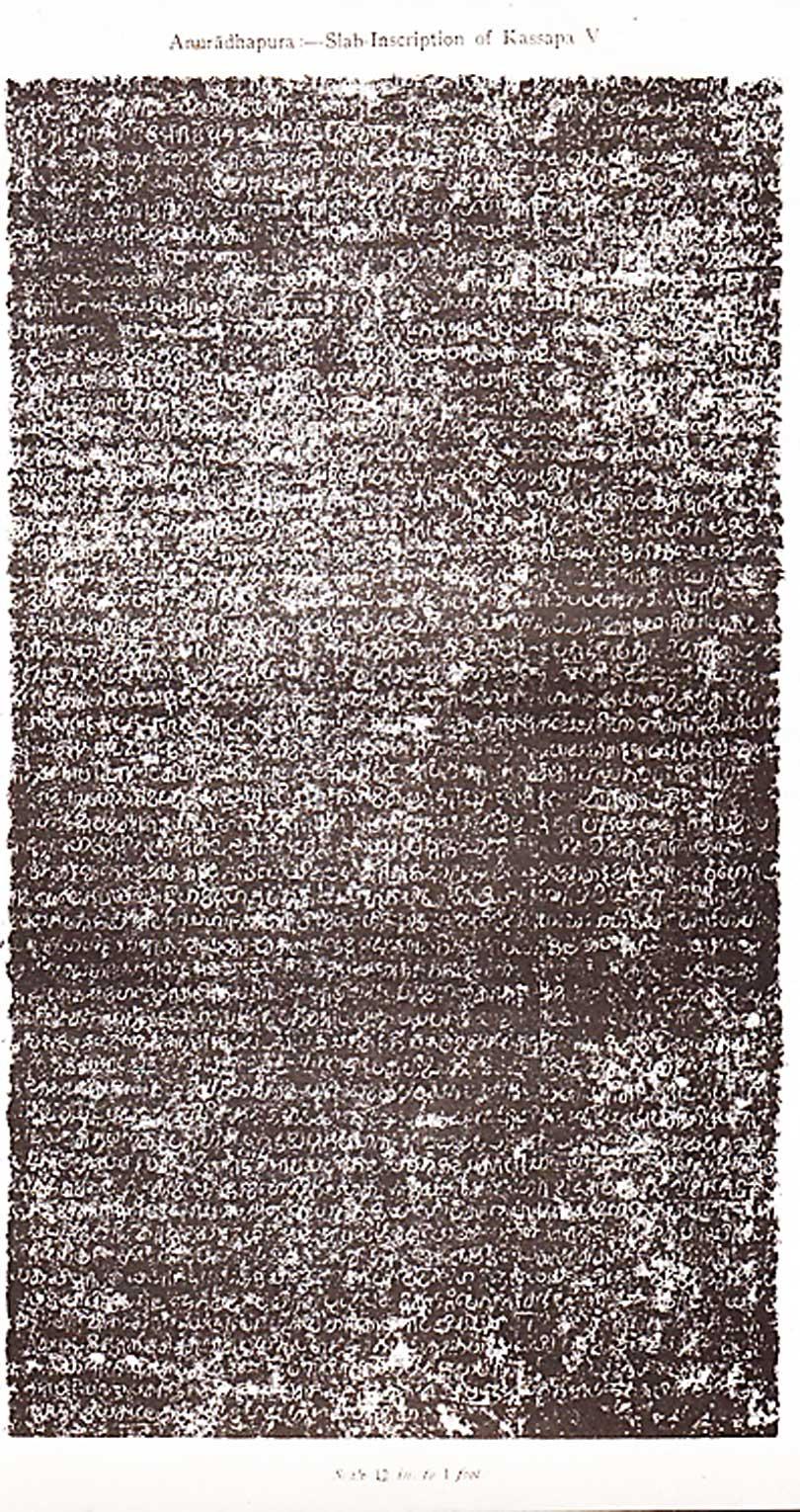
Slab Inscription of Kassapa V
………..Rajmahaveherhi isa Pirivenhi isa Piyangalhi isa Mehenivarhi isa…….
…..of the buildings belonging to the Rajamahavehera, Parivena, the Padhanaghara Monastery and the residence of the Mehenis………….
A grant of the immunities to a plot of land of five payalas in extent belonging to Tisaram mehenivara on the Mangul maha-veya (Auspicious High Street) built by the Commander-in-Chief Sena during the reign of King Kassapa V is the subject-matter of the pillar inscription at Ayitigeveva in the Anuradhapura District. Another pillar inscription from Kukurumahandamana in the Vavuniya District is a grant of immunities to a village belonging to the hospital opposite the Mihind Aram Mehenivara built by the same person on the high street of the inner city [of Anuradhapura]. The location of the hospital to be in front of the Bhikkhuni Arama suggests that the Bhikkhunis served in these hospitals in advisory and nursing capacities. The Mahakalattawa pillar inscription in Anuradhapura District mentions the Nal Aram Mehenivara, which had been an Arama of the Bhikkhunis for a long period.
Then it comes to our mind the patronage extended by King Mahinda IV (956 – 972 CE) in building hospitals.
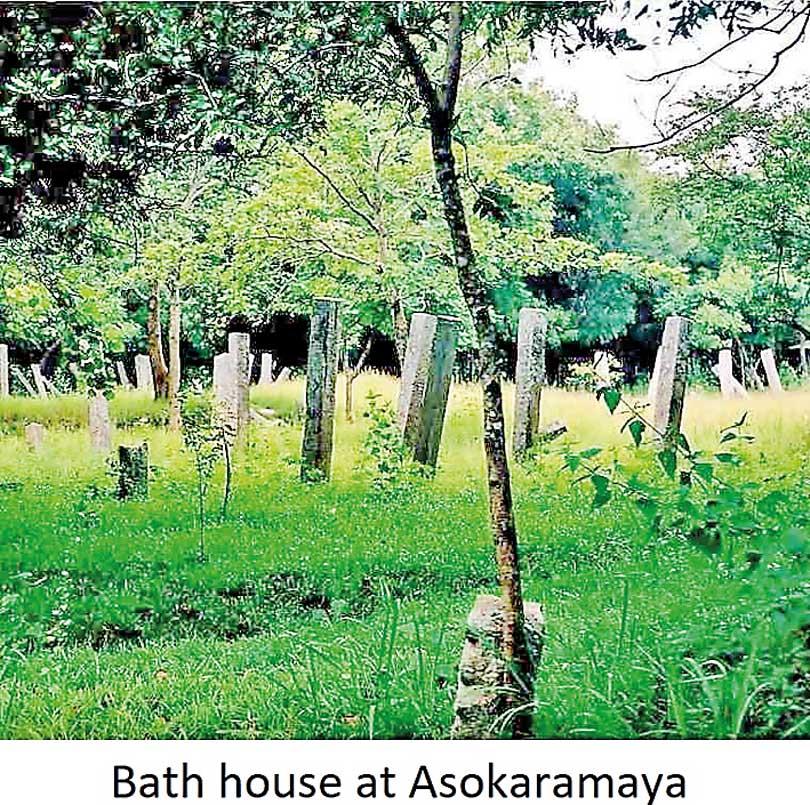
He built alms halls for the bhikkhunis and repaired the Bhikkhuni Aramas to encourage them to help the helpless as mentioned in his Jetavanarama (now Abhayagiriya) Slab Inscription.
According to the Mahavamsa, King Mahinda IV had built a home called Mahamallaka and designated it to the Bhikkhunis belonging to the Theravada School.
The discovery of ruins of Bhikkhuni aramas at various sites in Anuradhapura sheds light on the existence of the Bhikkhuni Order for several centuries after its inauguration. It is reported by an inscription that the ruins at Anula Tissa Vihara at Puvarasankulama near Mihintale are of a Bhikkhuni Arama of the early Anuradhapura period.
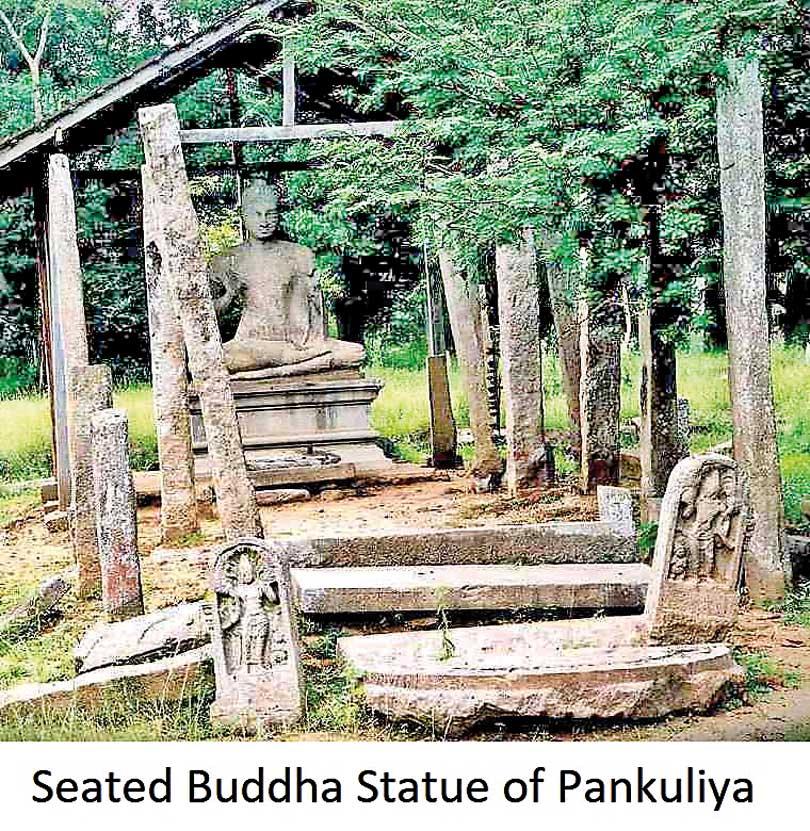
The ruins at Uttarasaliya Dalada Vihara in close proximity to the Anuradhapura – Jaffna road junction have been identified as a Bhikkhuni Arama on the basis of a fragmentary slab inscription found at the site mentioning the donation of two karisas of paddy land to it.
The Asokarama at Pankuliya in Anuradhapura discovered by H.C.P. Bell is a vast monastic complex with ruins of a Bath House for the Bhikkhunis built by about the 4th century CE.
According to the Mahavamsa, the political situation in Sri Lanka was chaotic after the demise of King Mahinda IV. The invasion of the Island by the Cholas from South India led to the downfall of the Anuradhapura Kingdom. The real conquest began during the reign of the Chola King Rajaraja I when Mahinda V (982 CE) ascended the throne in Anuradhapura.
He was a weak ruler and due to the people revolting against his rule, he had to flee from Anuradhapura to Rohana. There he was captured by the Chola army with his queen and taken to the Chola kingdom as a prisoner.
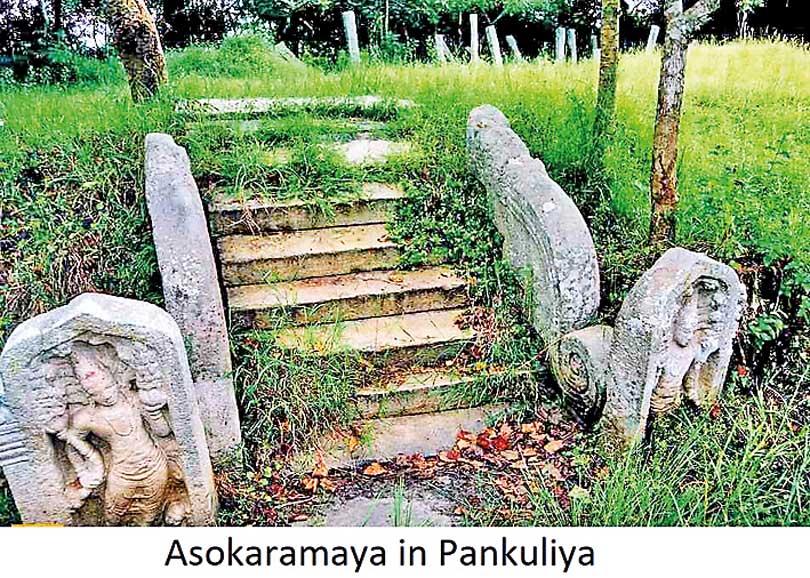
The city of Anuradhapura was plundered by the Chola army and the treasures were taken to the Chola country. Life of the civil society was disturbed when the Chola army marched to the city and set fire to it.
This period of strife at the end of the 10th century, which engulfed the whole country, led to the cessation of the Bhikkhuni Sasana in Sri Lanka.
(The Lecture was delivered at the Mahaweli Centre Auditorium on November 25, 2019. The writer is the Vice President of the Royal Asiatic Society of Sri Lanka and former Deputy Commissioner, Department of Archaeology.)